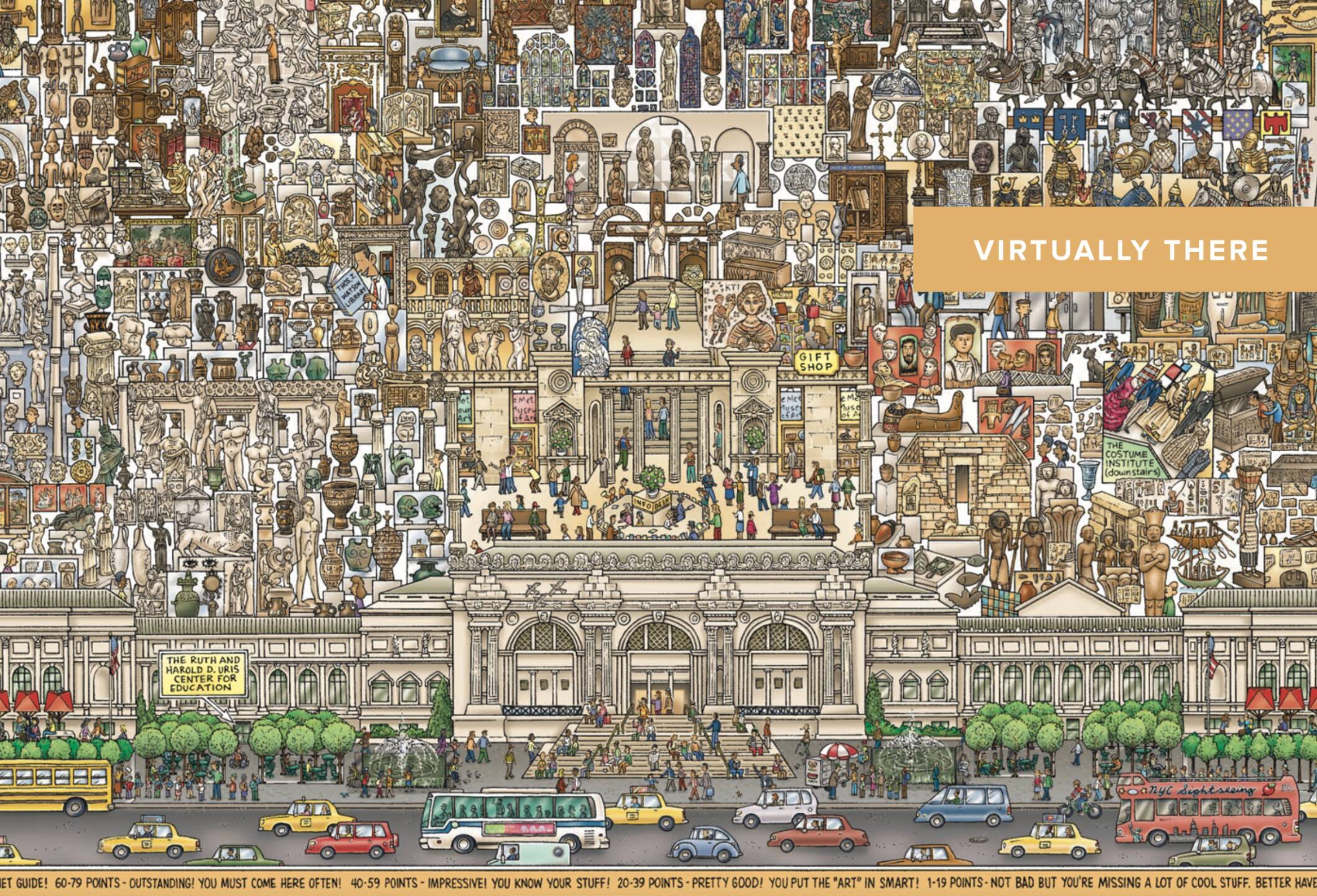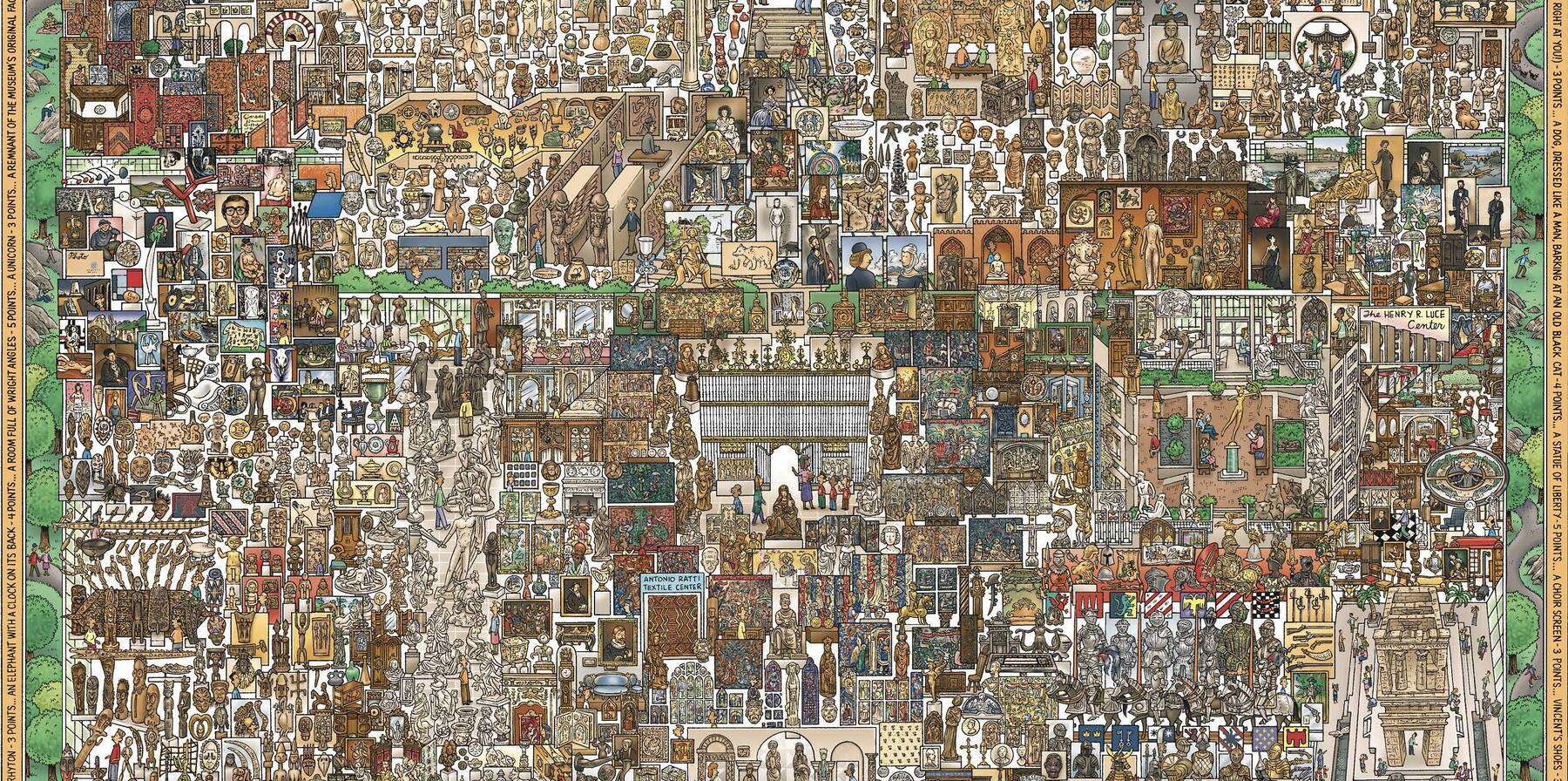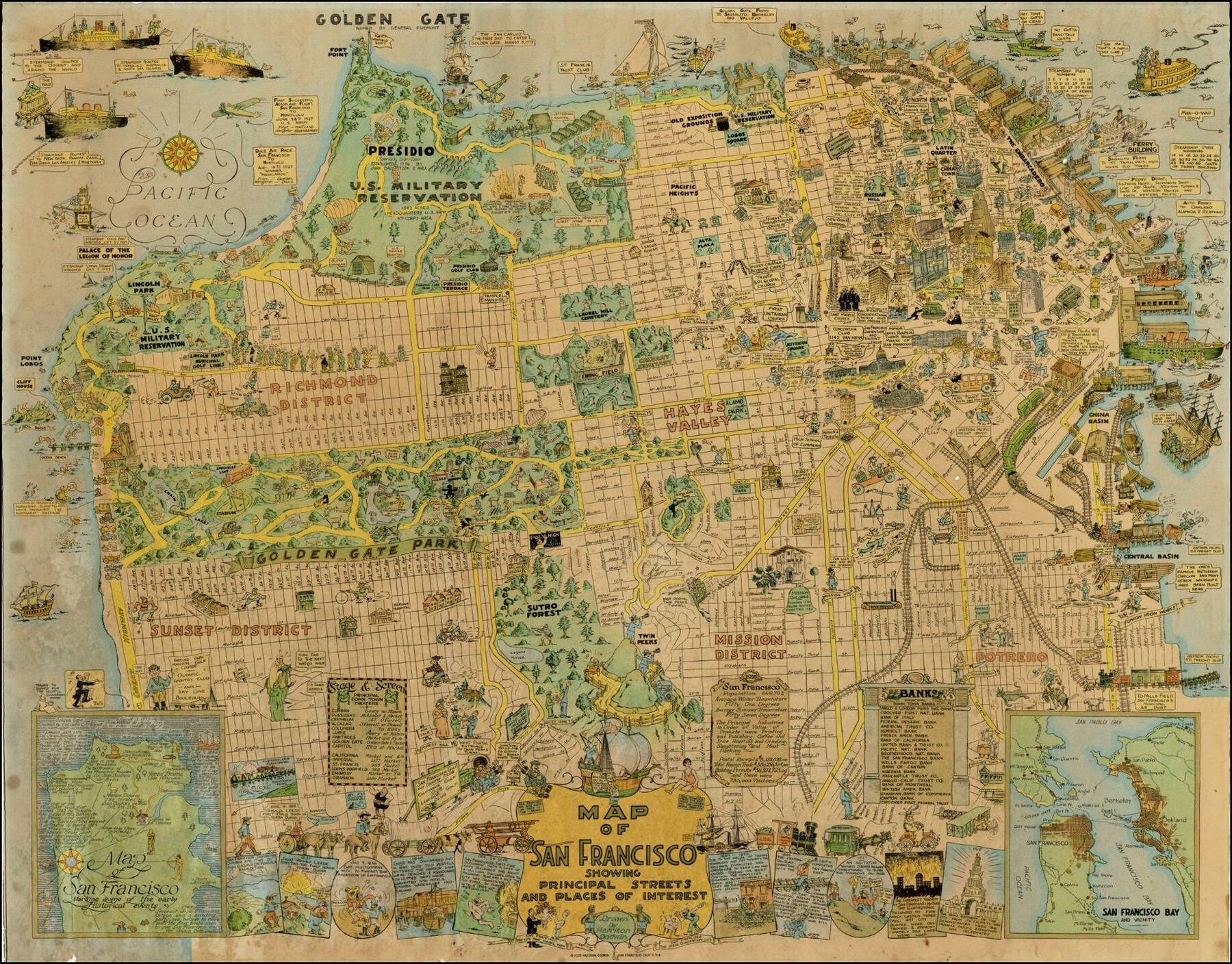A Vast Hand Drawn Map Of The MET
This wonderful, cartoon-like map of New York’s MET Museum was hand-drawn by John Kerchbaum back in 2004, and charts out every single gallery on one 18-24 inch page, that, while a touch out of date, is still available for free at the museum. It’s complete with charming depictions of families gazing at paintings, armour in the armour galleries, costumes poking out above an Egyptian tomb, couples dining in the restaurant and posing for photos in the lobby, and at least one lady knitting — all set amongst cartoonish renditions of hundreds of the MET’s most cherished pieces.
The full version of the map can be found here in a dizzying digital scan, that includes the “I Spy” puzzles that were added for children visiting the museum, making it a perfect map for those looking for an addictive and educational activity to share with the family.























Comments